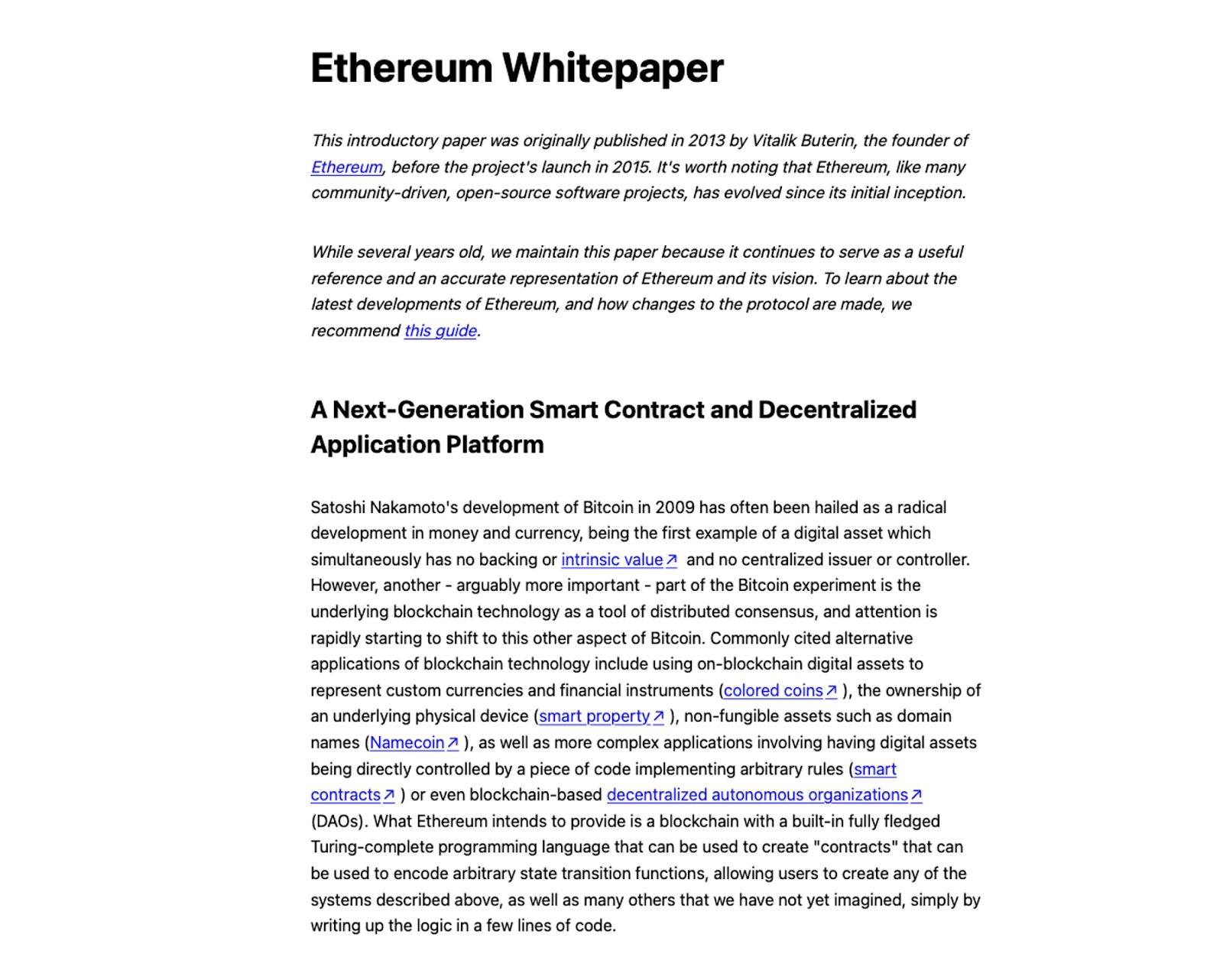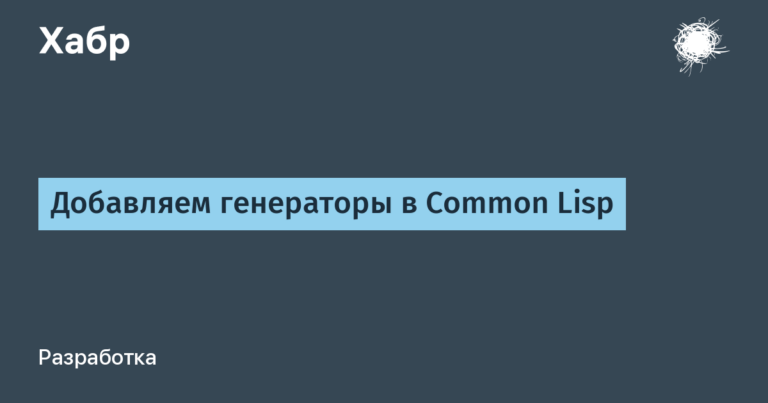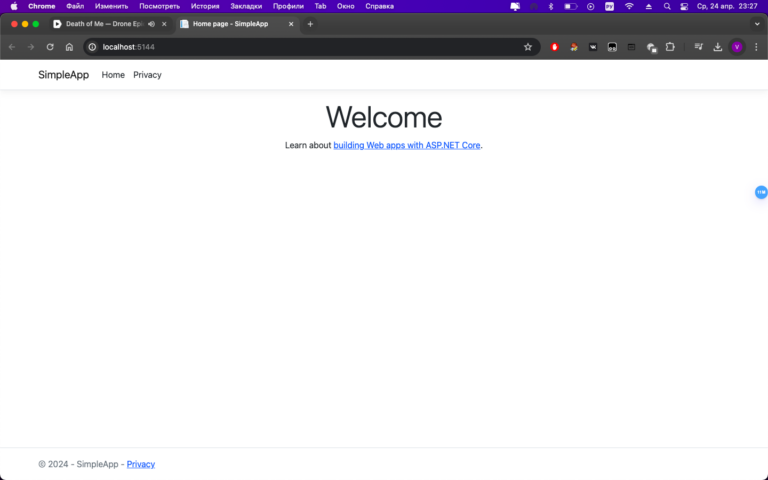How the crypto industry has outmaneuvered the traditional world of development
In this article I want to tell you what inspires me in the world of crypto. Yes, most projects are shit in the air, yes, there is a lot of scam and there are obvious ponzi schemes. But at the same time, it is an extremely dynamic industry where technological, business and marketing innovations are tested. In crypto, time flies very quickly: what passes in 5 years in the real sector can pass here in one summer. Crypto is a world where Open source is a success.
I'll say right away that 70% of crypto projects end in scam. This is a financial bubble that allows some gambling addicts to hit the jackpot and change their lives, while others lose all their money and remain long-term investors. I like to look at the world of crypto as a phenomenon in which everything is developing very rapidly. And I propose to look at it from exactly this perspective.
A little bit about yourself. Now I am developing an online bank for legal entities at Alfa-Bank, before that I launched a B2B ecosystem in Sberbank, before banks I worked at VK (ex Mail.ru Group) and Yandex, where I invented and launched Yandex Disk. Recently launched my own telegram channelwhere I write about fintech, management, reflect on the topic of my eternal struggle between a hedonist and a zodiac – in short, about everything that interests me today, subscribe!
Crypto industry through the eyes of an eyewitness
Crypto contains Bitcoin and Ethereum. Everything else is shit in the air.
There are quite a few projects in crypto that provide any real value to the consumer. Among the countless number of projects, one can highlight Bitcoin (BTC) and Ethereum (ETH) as the basis for other projects. Most of the other projects are shit in the air, it appears and then disappears. A rare project from 2017 has survived to this day.
You can also select stablecoins – USDC or Tether (USDT). The latter actually makes money: the quarterly profit according to the latest reports amounted to $2.84 billion, the net profit was less – $2.16 billion. And the entire crypt essentially consists of these four monsters.
There is a popular foreign portal where you can track crypto – CoinMarketCap, and there is ours – DropsTab, which was made by the founders of the “Crypto Narnia” community. They have a series of crypto projects: icodrops. com – all kinds of ICO activities, the guys also promise a quick relaunch of the project. dropscapital. com is a closed portal with analysis of key news and discussion of investment ideas. This community has replaced all the chats/channels in TG for me. Login via NFT. Now the price is about 1.5K USD. But DropsTab is the best. This is an improved version of CoinMarketCap, with analysis of the projects themselves + tracking of your portfolio.
I believe that the development of crypto is similar to the work of R&D departments in ordinary companies. And the founders of these crypto-projects are Growth Hackers, so beloved now in the real sector, who are constantly trying to find growth points.
In crypto, everything revolves around investors who buy project tokens in small quantities and hold them in the hope of an increase in price – they are usually called hamsters. And we will call them that without any negative connotation.
Most projects are aimed at attracting these hamsters and meeting their needs. What do hamsters want? They want to make money. And crypto startups provide them with this opportunity: they come up with mechanics to involve hamsters in various processes, where the reward for participation will be income in one form or another. That is, they give money to the hamsters.
Stages of crypto development
I’m not 100% sure that everything developed exactly like this, but I want to tell you how I saw the development of crypto from the moment I became interested in it. Moreover, it is important that at some moments of the market decline I was in complete despair and I missed some phases of development. For example, I skipped Defi Summer completely – and this is a very cool stage, when in one summer something was born in the crypt that in the ordinary world had been created for decades.
That is, the development of the crypto industry occurred very rapidly; over the several years of its existence, it transformed so many times that it was difficult to keep track. Let’s briefly go through the history of crypto development from the beginning of the crypto boom to today.
2017-2018 ICO
At the dawn of the emergence of crypto startups, ICO (Initial Coin Offering) was widespread, during which the newly created project issued coins, and people could put a “cutlet” into it. Moreover, to conduct an ICO, the project only needed one White Paper – a document describing the essence of the project. People read the paper and deposited money.

White Paper Etherium is just a document)
Since there was a rush, many went blind threw their money there, and so the project received funding, mainly from retail. Retail made money on this, because there was a bull market, those who were the first to make money, and the rest then bought from them at a higher price. And everyone was in the black, well, except for those who bought the last ones – hamsters.
Then the ICO topic was dropped because the American SEC appeared and said that it's like issuing securities. And everyone became afraid to play it.

ICOs have been replaced by new mechanisms. The market has grown to such volumes that large investors and venture funds have come in and looked at these projects as ordinary startups. Rounds of investment attraction have appeared:
early – pre-seed (pre-seed stage), seed (seed), angel financing, Round A;
late ones – Round B, Round C, Round D and others.
And in addition to money, foundations gave projects status, connections and lobbying interests.
2020 Defi Summer
Then there was Defi Summer, which I missed. It was the summer of 2020 – a new niche in crypto opened up, which contrasted itself with products from the world of traditional finance: deposits, lending, loans – only in crypto. Essentially, this is the transfer of tradeFi tools to the world of crypto with a multiple increase in the quality of UX and developed tools.
Over the summer, something was born that in the ordinary world took decades to create.
Testnet, nodes and drops
Obviously, all projects need an audience, and when you have professional VCs as backers, one White Paper is not enough for them. Professional capitalists need project metrics, and not just an idea for creating software, and here crypto enthusiasts have managed to get out of it gracefully.
They came up with a format for attracting early users who tested the work of their service, grew audience metrics, and the projects themselves encouraged their activity through the distribution of drops. This is a super elegant solution because it allowed:
Form a community of early users;
Check the operation of the service;
Increase product metrics;
Distribute tokens without selling them.
And here the crypto industry outplayed the traditional world of development. The real sector hires QA specialists on staff, creates an infrastructure for load testing, creates bug bounty programs – attracting external testers/hackers for a fee, and cryptans have figured out how to do this practically for free for themselves, and even improve audience metrics and gather a community. Checkmate.
The idea is this: the project launches a testnet and users must perform certain actions in it, click on all sorts of elements, thereby creating activity on the network, and in return they received tokens/coins, which can then be exchanged for another crypt and get a profit.
The activity that these users created was visible from the outside, and the project looked alive – with an active audience. That is, this is such a “knight’s move”: they received initial funding from VC, formed a community, loaded and tested the project, distribute tokens for activity and loyalty to the project (because selling them is prohibited after the SEC conclusion), there is immediately a community that uses and identifies bugs – very elegant. And the hamsters themselves come. Powerful move.
Another interesting move is how the crypto community attracted a technically advanced audience to testing. Above I wrote how users tested UX services and loaded projects from the front, but there were also backend tests. The guys raised nodes, which, on the one hand, helped projects test work scenarios on the server side, and on the other, ensure the initial decentralization of the project.
Cash Flow
Another interesting move. When there are a lot of testers (read drop hunters) and they become sibilers – these are the ones who abuse projects, creating multi-accounts to get more drops. Ahahahaha guys, sorry about this slang. I don’t want to translate it into Russian, because that’s how the community communicates in their chats. The projects also decided to make money on these sibilers by transferring this entire mass of users to the production network – the mainnet.
On the mainnet, each transaction costs real money, or rather, you have to pay for “gas”. Gas is a denominated unit of payment for transactions on the Ethereum blockchain. And many sibilers agreed – in order to continue receiving bonus tokens. Then the projects showed not only an increase in audience metrics, but also the first revenue. Despite the fact that sibilers make money from project drops, and projects make money from sibilers, everyone is happy.
That is, the projects continued to distribute tokens, but now they also began to make money from it, showing the correct dynamics to their VCs. They now have not only White Paper – this was in the ICO cycle, and not only an audience – this was in the Testnet, node, and drops cycle, but they already have the first financial flow.
Retro drops
There is also a cool idea that allows you to increase the stickiness of the product – something similar would not hurt in the real sector. To stimulate long-term relationships with users, platforms introduced so-called retro drops. If a participant is on the platform for a certain time and performs targeted actions, then bonus tokens are credited to his balance. And so the participants were given an additional incentive to work with the platform. An active community is a good sign for the hamster – it means that the platform is alive and you can purchase their tokens.
TVL, LSD restaking
Relatively recently, another indicator (bell indicator) began to gain popularity among hamsters – TVL (Total Value Locked), which shows how much money was contributed to the project by retail users. And here again the crypto founders are on horseback. They openly show everyone the trust of users in their project. Every time I admire how they combine tech technology with business ideas and social vices (greed) into beautiful designs that allow them to attract funding from both venture capitalists and retail, while beautifully maneuvering through legislation. My respect, hats off.
A little off-topic information for those who are interested in knowing why restaking is needed. For me, this story began with simple staking: when you delegate your ETH to an LSD provider (liquid staking provider), for example, Lido Finance or RocketPool and receive ~4% per annum. And now the story has found additional development in the form of restaking. For example, this was done in the EigenLayer project. That is, you can deposit money with any popular liquid staking provider, for example, in Swell at 4% per annum, then re-pledge these wrapped assets into EigenLayer, which will give you more of their points for this, which are converted into project tokens. And that’s not all, Swell itself will also give you a drop. But it is not exactly. This is more complicated than a deposit 🙂 You can lose everything, for example, if one of the protocols is broken or the cost of the underlying activity is devalued, but you can also earn money. Explanations:
ETH – increase in the value of the underlying asset;
swell – drop for participation;
swell — % for staking the underlying asset;
EigenLayer – points farming.
NFT distribution
Now, in 2024, I see a new way of distributing tokens through NFT (Non-fungible-token – indivisible token). For me this is a more complex mechanic. You buy an NFT, store it in your wallet, and the main tokens are sent to you in the same wallet. Essentially, this is a new form of ICO, only through NFT. But with these NFTs it’s not so simple: they are traded at auctions, the price needs to be constantly monitored, and this takes a lot of time, so this scenario passes without me.
Communication with the audience
At the beginning of 2017, when everything was just beginning for me, every crypto project had Twitter (X) and Telegram in a chat format, where company employees communicated with the audience in these chats. And to be honest, it was very cool. When you could talk so transparently and publicly with the project team. I have never seen this in the real sector. I was very interested in this.
But chats have evolved over time, moving from Telegram to Discord, where all communication takes place.

An example of communication, but from 2024
In Russian-language projects, I don’t see working with discord at all. The only project in the RU space that I know is a Yandex server for former Yandex employees, of which I am a member.
Twitter (X) is still the main channel for publishing news. Twitter is very important for the entire crypto industry. It is so important that it is one of the important criteria for assessing the financial attractiveness of a project. Investors look at the number of users and which influencers are subscribed to the project. If someone famous, such as Andrew Kang or Vitalik Buterin, subscribes to your project, this is a signal to the entire community to support the project or even a signal to buy tokens.
However, the main communication of the community occurs in chats. For example, the Stacks project is a second-level project on the Bitcoin blockchain – a completely decentralized thing. There is no support service there, if you have any question, you can ask it in discord, and the chat admins or even top members will help you. Absolute decentralization. But you have to be very careful. When I wrote there, a bunch of accounts immediately knocked on my door and were trying to steal (steal from my wallet) assets.
Communication in discord chats plays a huge role in crypto. Role models are created there, users receive rewards for activity, for creating and publishing memes on social networks – projects pour out tokens for this.
Ambassadors
There are ambassadors in chats who receive bonuses for activity. Now, by the way, everyone is posting refs like they’re infected. Even top influencers suffer from this. It is for the sake of these refs that influencers create (promote) shit in the air, because if they say that the project is weak, no one will follow, and if they say that the project is fire, then they will follow their ref and they will be given tokens.
Who can afford ambassadors in traditional business? Well, big companies can pay for it.
And what large companies do for millions of USD, small crypto projects do for candy wrappers – for tokens that very soon may cost nothing.
DAO
There is also such a thing as a DAO (Decentralized Autonomous Organization). This is a form of project infrastructure management that involves the participation of the community in making certain decisions on the development of the project. For example, the DAO model uses Uniswap, a popular decentralized exchange (DEX). UNI token holders can participate in voting on exchanger management issues and thus influence further development.
Is this possible to imagine in traditional projects from the real sector? I consider this the crowning achievement of working with the community, which is determined by the approach to development – in crypto it is customary to do Open Source.
True open source
Writing code from scratch is bad manners, you need to fork from someone.
Traditional software development is closed, the code that is produced in the company is NDA. What developers do belongs to the company and everyone is used to it. There have even been cases when companies tried to sue developers for the rights to their own projects, which they did in their free time. There are quite a lot of such examples, just look at the story with Nginx.
In the world of crypto, the vast majority of projects make open-source code. There’s even a culture of borrowing solutions – that is, there’s no need to develop your own, it’s better to take something someone else’s and ready-made. Everyone copies each other. And actually, it's cool.
For example, if you need to write some kind of smart contract that will distribute tokens to addresses, then it is considered cool if you take the solution of some well-known startup and copy it. This way you will automatically prove to the community that there are no bugs in the code, because it is a fork of that project.
Examples? Dogecoin is a fork of Litecoin, which in turn is a fork of Bitcoin. Or Binance Coin (BNB): started out as an Ethereum-based ERC-20 token, but was later migrated to the native Binance Chain blockchain. This is an example where a project starts by using existing code from another blockchain, but then moves to its own, unique architecture.
This is true open source. They are extremely open. And from a community point of view, you can go into the chat and talk to the developers. And from the point of view of the code, everything is on Github, anyone who wants can check it or take it for their project. Writing code from scratch is bad manners, you need to fork from someone.
World in miniature
In the ordinary world of development, they talk a lot about HADI cycles, testing hypotheses, and innovations. And at the same time, some SaaS, which appeared in Russia ten to fifteen years ago, is still trying to find its niche. Some of these services are really not needed by the mass user, but they continue to promote them for years and decades and cannot understand that this has become obsolete. I know a lot of fintech services that are grasping at straws.
And in the world of crypto, every cycle has a new narrative.
It's very similar to the real world, but one that lives its life very quickly.
Open source ideology and practice of forks allow you to create products very quickly. The community itself understands that this is innovation and gambling. The community enjoys this and makes fun of itself, creating meme coins that ultimately cost real money.
And I love this community. Yes, they're crazy, but it's fun. Yes, these meme coins are a bubble, everyone understands that. You shouldn't take them seriously. That's the beauty of it.
The world of crypto is the perfect sandbox.
Everything happens very quickly there. And this entire industry is ready to do one thing today, and another tomorrow. They don't stick to trends for decades.
It is very interesting in which direction the crypt will develop further. I will follow trends and share my thoughts in my Telegram channel — it’s not only about crypto, but also about everything that interests me. Subscribe!





